If you’re a car enthusiast of any kind, you’ve probably seen countless YouTube videos or programs where the host pulls some junky old car out of a field and brings it back to life. Due to the rising cost of ‘cool’ cars, it has become increasingly popular for enthusiasts to search for broken or forgotten treasures in order to snag a good deal. The best way to score a bargain is to find something that needs a good bit of elbow grease, especially if you can find a non-running project that the owner just needs off of their plate. This week, we’re going to focus on what to expect when you decide to go rescue a neglected car while giving you the confidence to go do it.
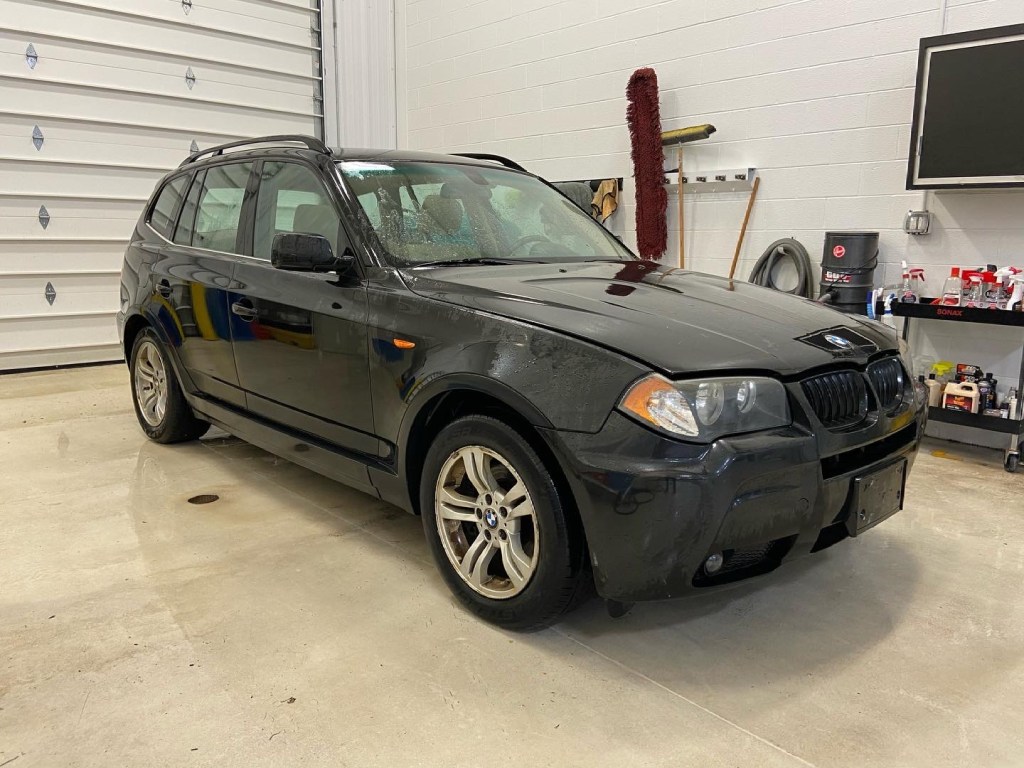
The idea of finding a cool car at a bargain is constantly bouncing around most enthusiasts’ heads. We hunt Facebook Marketplace, Craigslist, Autotempest, and the most ambitious of us keep our eyes peeled any time we drive out in the country for something that might potentially be for sale with the right cash offer. What appeals to me, in particular, is the prospect of a new project where I can bring something back from a certain demise and turn it into a respectable car at a major bargain. That’s why I recently did just that with this manual-transmission BMW E83 X3. But we’re getting ahead of ourselves. First things first, you need a budget and a plan.
Even if you aren’t shopping for a new project, it’s fun to just pick a number and say, ‘yeah, I could justify spending that on the right pile of junk and the parts to make it less junk.’ You and I both know at least 20% of your day is spent browsing listings and pondering the thought of scooping up someone else’s headache for pennies on the dollar. What makes this exercise extremely helpful, in practice, is that it gives you time to think about how much you’re willing to invest should the opportunity or need arise. In my case, I needed something with good cargo space, all-wheel drive, that I know how to work on, with a manual transmission, and that was extremely cheap. So, I started where we all do: hunting online listings with a budget of under $2,500 to buy a car, throw a few parts at it, and make it a good runner.
Fortunately, I was able to find something quickly. Even better, it was a car that wasn’t listed for sale anywhere and located only a few miles from me. A coworker happened to know of someone with a manual X3 that had been sitting stationary in their yard for a few years and he needed it gone. I made the call, spoke with the owner about what made him park it originally, what it might need, and then I went to investigate. With many of these barn/yard find cars, you’ll likely be the only one actively interested, especially in something broken or tucked away unseen, but it’s a good idea to avoid waiting to strike. You can always say no if the car is worse off than you want to deal with or the owner doesn’t budge on price, so don’t be afraid to go see something, otherwise, you might miss the chance.

I went to meet with the owner, inspected the car, identified the problems he knew, found some he didn’t and decided it wouldn’t take more than some basic maintenance, a few junkyard parts, and some time to make it perfect. Well, make it good enough for me, at least. As it sat, the owner claimed it needed a starter and ignition service to run, among a few other things like a transfer case that was on the outs and an AC compressor that had completely locked up. Naturally, that meant I’d be able to live my ‘barn find dreams’ and bring a trailer. If you don’t have a tow rig and trailer, you’ll need to either bribe a buddy with one or fork over extra cash to rent one, so don’t forget to budget in at least a lunch and a six-pack if you’re lucky enough to have access to a friend’s trailer.
We shook on a deal and that weekend I returned with a truck and trailer helpfully driven by Kevin Ferraro, our resident winter beater expert. This is where the first real challenges with a project car or something that’s been sitting for years come into play. The parking brake had been left engaged that entire time, so it had completely seized the rear wheels. No amount of winching, pushing, pulling, or cursing would set them free. To make our lives easier, we partially inflated all the tires and attempted to remove the wheels so we could at least try to manually free up the parking brake. No dice. The wheels were fused to the wheel hubs much like the brakes. Without a sledgehammer, that left us only one choice in the interest of time – try to bypass the neutral safety switch and bump the car on the starter, if it would run, to free up the rear wheels.
With the trailer battery, we powered up the X3, connected it with jumper cables to the owner’s farm truck just in case, and turned the key. By some miracle, it actually started, ran, and moved enough to break the wheels free. We were fortunate with this bit of luck, so we towed it up on the trailer and hauled it back to the ECS shop. This is just one of the gambles you’ll play with a barn find roulette. Sometimes, it doesn’t need much to run and will turn over with little fuss. Other times, though, you’ll spend days if not weeks trying to hunt down what might be causing it to stay dead. Either way, be prepared for the worst with a neglected car and hope for the best.
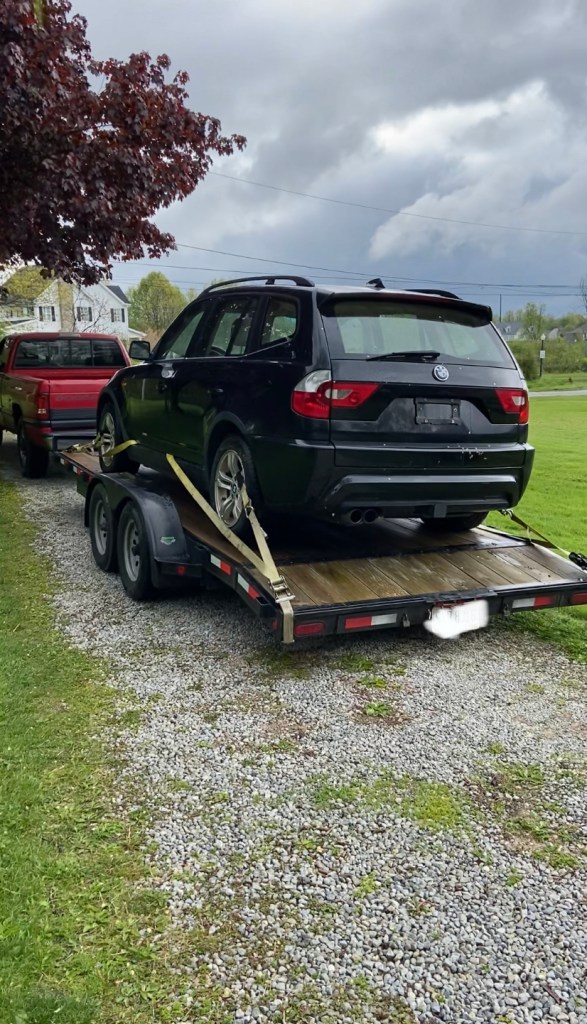
With the X3 towed safely to ECS, I was able to throw a fresh battery in it, start it, inflate the tires, and drive it around the lot. When something sits this long, it’s a good idea to at least toodle around a parking lot or back road to see if any problems arise before you go to order parts or take the car out on a busy road. The best way to tackle a project like this is to identify everything it needs, buy it all at once, and then begin the refurbishing. In the meantime, you may luck out and have something (barely) drivable as a best-case, or worst case, at least you don’t have something completely taken apart and occupying valuable space while you wait for parts to arrive.
After a couple peaceful and uneventful laps around our facility, I felt the brake pedal firm back up, the gears shift freely, the clutch felt consistent, it didn’t have any extremely worrying vibrations, and I didn’t hear any creaks, whines, or noises I hadn’t already heard. That meant it was time for the first minor victory moment: a full wash and detail.

I’ve said this before; you don’t own a car until you’ve washed and detailed it. The practice of completely cleaning, refreshing, and detailing a new-to-you car not only gives you a literal clean slate to work on, but it also lets you discover any imperfections you’d miss without spending hours poring over the inside and outside of the car inch by inch. With the X3, I cleaned roughly twenty pounds of pine needles, dead leaves, sticks, and who knows what else from the engine cowl, all the panel gaps, inside the front grilles, around the inside of the rear hatch, and all the doors. The interior was thoroughly de-molded, the carpets were cleaned and vacuumed. For the finishing touches, I took everyone’s favorite Griot’s products and put them to the test making this X3 look as pretty as it possibly could, despite the faded paint.
Once your new project is clean, you can start working on it without fear that you’ll encounter something that has decided to make your yard find its home. All the creepy-crawlies were harmlessly washed down the drain in our cleaning bay, so I felt safe finally putting the car up on the lift for inspection and scanning.
The scanning part is especially important. While it doesn’t apply to anything older than 1996, a Schwaben Professional Scan Tool will make your life as a DIYer extremely easy on anything OBDII. Hidden faults that might be easily missed can be seen in the full system scan these devices perform as well as the exact cause of the fault so you don’t have to shoot a parts cannon at your project. It’s like a sniper’s spotter scope. The scan tool tells you exactly what is broken and where to focus. I found that my X3 had about a million fault codes, three of which I cared about. A cylinder 5 misfire and both banks running lean let me know that I’d made the right move ordering vacuum lines and an ignition service kit, which is where I began.
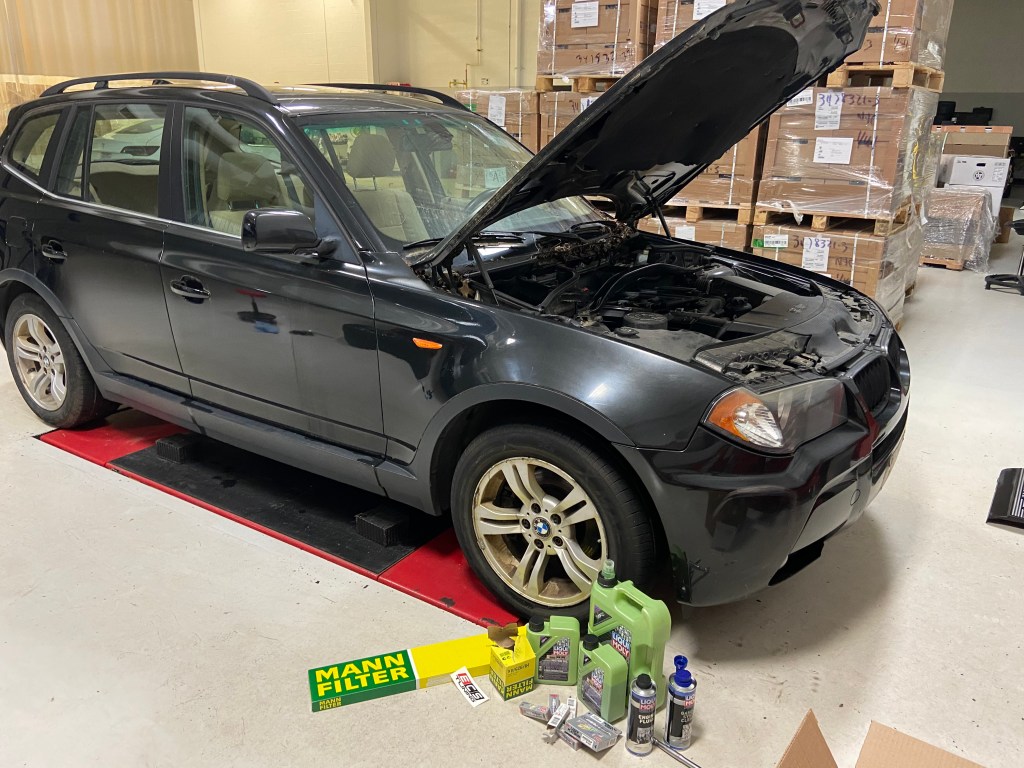
It’s a good idea to assume that a car you found sitting for a few years could do with filters, fluids, spark plugs, drive belts, and possibly some vacuum lines or cooling system components. With the ignition service finished in the car and any obvious vacuum leaks addressed, I grabbed an Assembled by ECS Oil Service Kit that included LIQUI MOLY Molygen, a MANN filter, and ECS magnetic drain plug. One of the more important and easiest maintenance services I highly recommend is using LIQUI MOLY Pro-Line Engine Flush, pictured above in the small bottle. Simply dump that in with your old oil, let the car idle for about fifteen minutes, and it works its magic by removing buildup from internal surfaces, a common problem on higher mileage cars that have had deferred maintenance. I also suggest their injection system cleaner to ensure nothing is clogged up from old fuel in the system if you’re rescuing something that’s sat for a while. Lastly, a fresh MANN cabin air filter was included to make sure I wouldn’t breathe nasty mold through the vents, probably the most important parts in this minor service.
With these basic services tackled, the X3 was no longer in dire need of anything pressing and, for the first time in two years, drivable. That victory trip back home from ECS to my house a few miles away was a gratifying experience. This extremely rare 6spd X3 had sat, neglected, with barely any real issues. It was purchased for barely more than a smile and serviced for about the same, all in a day. It’s important to remember, though, just because you have your cheap yard-find project car running and driving doesn’t mean it’s finished. This is where the real work starts.
When cars sit, things like to freeze up, become brittle, and wear extremely differently than they do when they’re used regularly. Making your project car run and drive is just the first step. Now, you have to drive it and ‘stress test’ everything in the car. It’s during these few thousand miles of abuse that you’re most likely to encounter something the car needs or break something that may have been on its last few miles of life.
At the moment, though, you’ve achieved something that few people ever have the opportunity to experience. You purchased something cool at an extreme discount, put in work to make it run, and have the pleasure of physically driving something that otherwise wouldn’t be on the road without you. That, I think, is one of the more rewarding things you can do as an enthusiast. Forget a high-budget build, or dialing in perfect wheel fitment. Making something run and drive again is a much more engaging experience. All it takes is some ambition, generally a few basic parts, some tools, and some time.
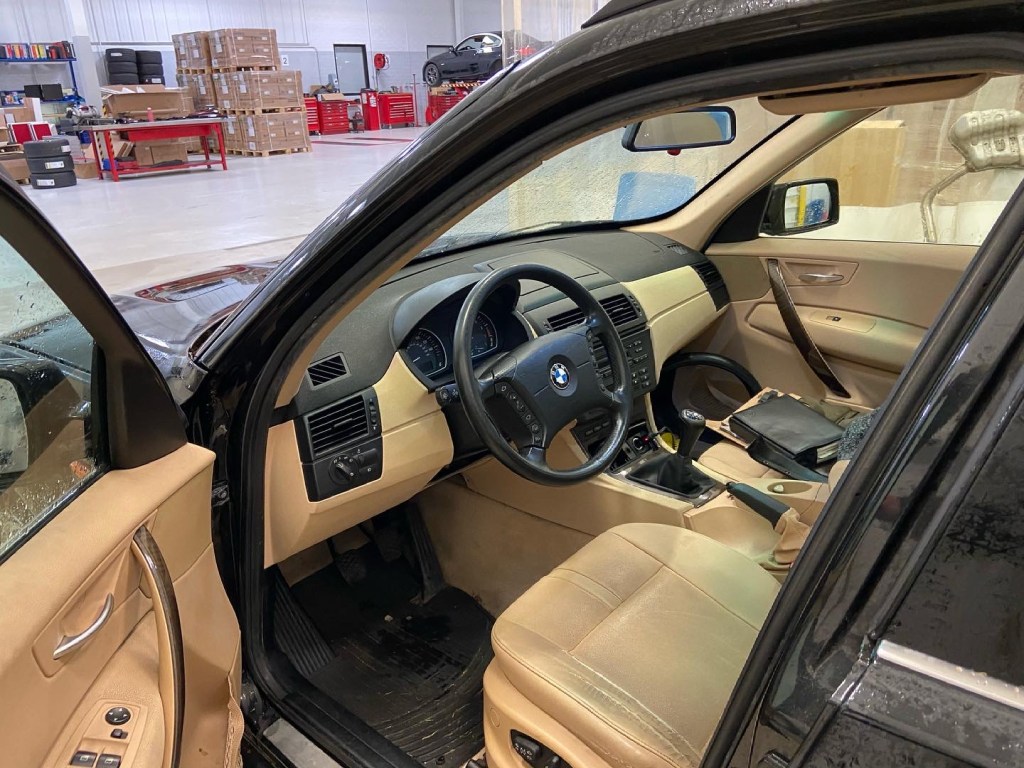
If you are interested in making something run again or finding a broken old Euro project car, just be prepared on the front end with maintenance parts and proper tools. A Schwaben Professional Scan Tool, Assembled by ECS oil service kit, ignition service kit, and brake service kit will likely be almost all of what you need to at least set yourself up with a good foundation. With any luck, that’s all your hypothetical barn find will need. If there’s more, you can certainly find it here and speak with our in-house enthusiast experts who can recommend your next steps. So, don’t be afraid to go out there and rescue something this summer! Who knows, maybe it will be the best purchase you’ve ever made and the most fun you’ve had working on an old piece of Euro junk.

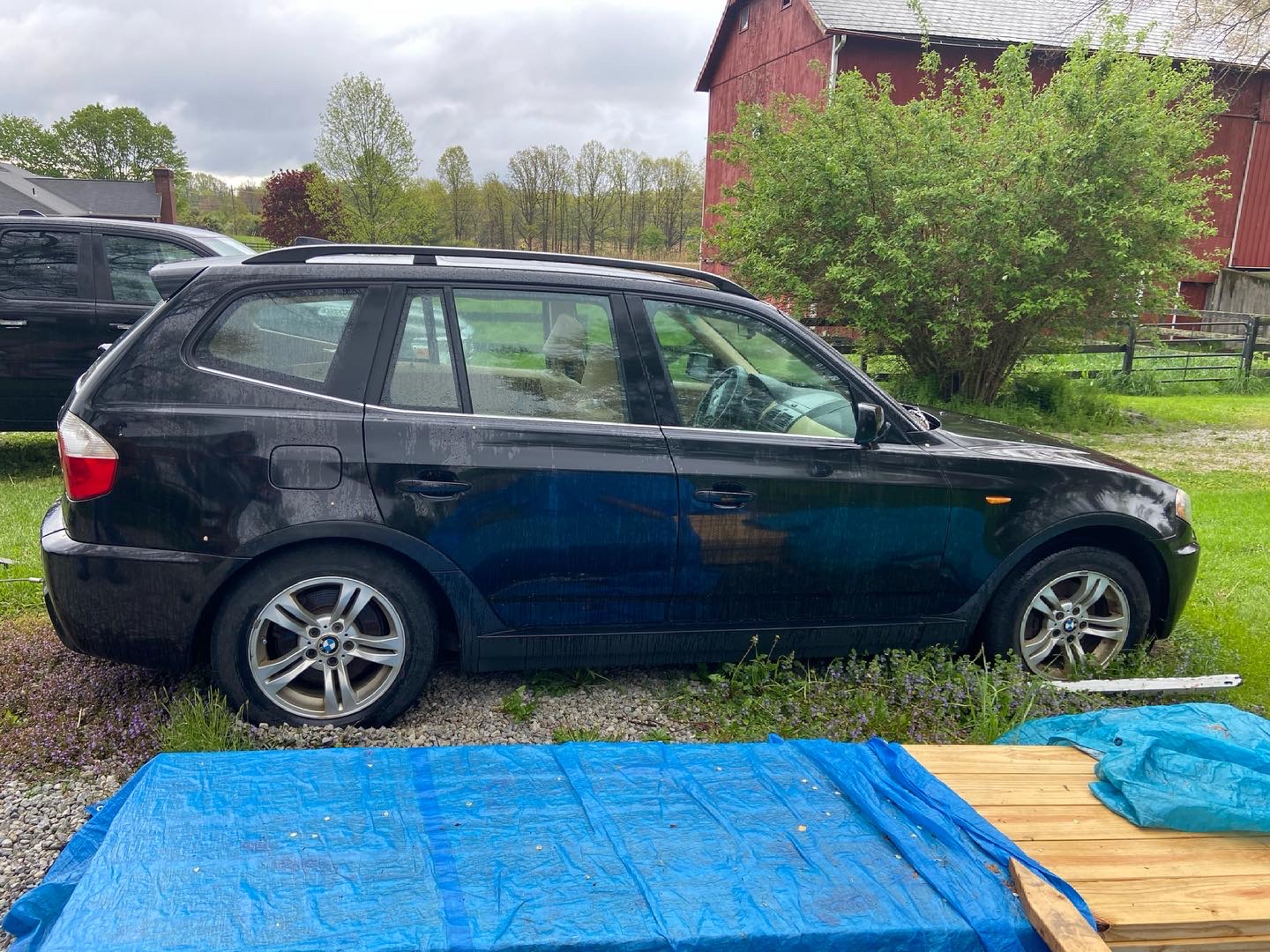


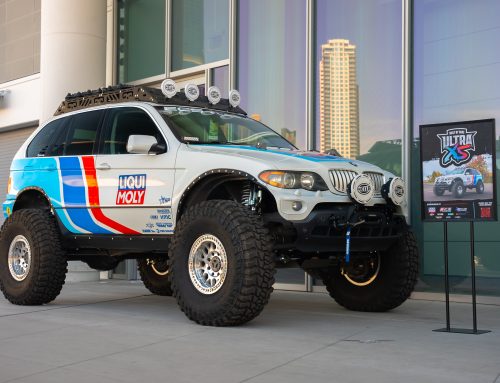




Great find. I own a 2001 525 Touring (wagon) with 174K. I’ve performed all maintenance on it myself since it’s second oil change. For some reason I believe these manual transmission BMWs will run forever! Send a sample of your new oil it next change to Blackstone Labs…they will tell you “lots” about your engine condition. Enjoy.
ohhhh I definitely do not want to know how many bearings are cannibalizing each other. If this M54 ever goes, I’ll be on the hunt for an S55.
Wish you would rescue my 20th 2003 Volkswagen gti lol
don’t tempt me with a good time
Congrats on rescuing a worthwhile – and rare with a manual – BMW model. Beautiful job and good on you for putting in the work. Hope this E38 X3 has a long, useful life in the right hands – yours!
2002 VW Passat Wagon 1.8T sitting at the end of the driveway. Engine speed sensor in the box. Brakes locked up. Sun beating on it. Hmmm, maybe coil overs, tires and some nice wheels… have the Liqui-Moly in the box too.
sounds like a perfectly reasonable order of operations to me
Going through this right now. My son just turned 16 and found a 2002 BMW 325ci on craigslist list that he “really wanted”. So without him knowing I went and picked it up. During the test drive everything seemed to be in line. Few minor issues nothing I can’t handle and hopefully let my son get his hands dirty in the process. Well with my luck as soon as I leave from buying the car. The first stop light the car is shuttering I get on the highway and the car is tracking horrible. Like I’m scared to have it on the highway. I pull over to fill the tank up and when I restarted the car it filled the whole and I mean the whole gas station parking lot with smoke.
As soon as I get home I start researching these multiple issues. Turns out most of the issues the car is having are very common. luckily I found ECS. You guys are great I’ve already purchased I ton of stuff from you guys and am on the road to getting this car back up to snuff and my son is getting his hands dirty too. He just installed his first set of lower control arms this last weekend. This is my first BMW and I was a little nervous about the up keep on one. But thanks to you guys it’s been a breeze.
-Thanks
we certainly know how that goes! There are tons of helpful DIYs we have on here specifically for that engine. Sounds like you have some suspension work to do and maybe DISA vavle, VANOS, and ignition service!
Very helpful